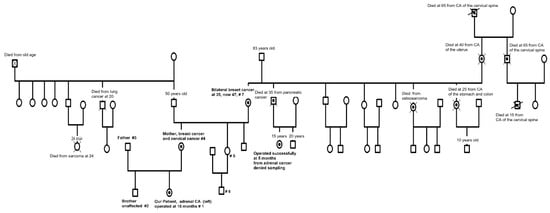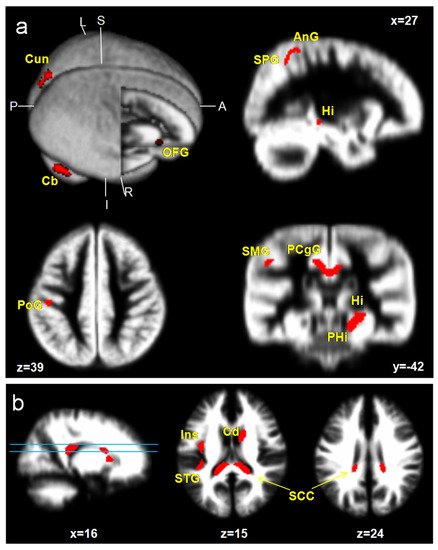Novel Treatments, Approaches, Prevention Strategies and Insights in Pediatric, Adolescent, and Gynecological Endocrinology
A topical collection in Children (ISSN 2227-9067).
Viewed by 68987Editors
2. Division of Endocrinology, Aretaieion Hospital, National and Kapodistrian University of Athens, 157 72 Athens, Greece
Interests: vitamin D; type 1 diabetes prevention; aromatase inhibitors; hypogonadism
Interests: pediatrics; neonatology; neonatal resuscitation; medical education; ethics
Special Issues, Collections and Topics in MDPI journals
Interests: reproductive endocrinology; infertility; endometriosis; assisted reproduction; endoscopic surgery
Special Issues, Collections and Topics in MDPI journals
Interests: metabolism; gestational diabetes; PCOs; endocrinology of the woman; immune and inflammatory disorders in relation to stress system response; endocrinology of exercise and physical activity; endocrine disruptors
Special Issues, Collections and Topics in MDPI journals
Topical Collection Information
Dear Colleagues,
Pediatric, adolescent, and gynecological endocrinology are entering a new era. Novel treatments are being developed for previously devastating diseases, such as enzyme replacement therapy using bone-targeting recombinant alkaline phosphatase for the treatment of hypophosphatasia, or the development of c-natriuretic peptide analogues for the treatment of achondroplasia. Old drugs are being repurposed with ongoing clinical trials in order to assess safety, tolerability, and efficacy, such as dantrolene sodium for Wolfram syndrome. The conventional approaches to hormone deficiencies are rapidly changing, such as the use of rPTH in hypoparathyroidism and the use of rLH/rFSH combinations in hypogonadotropic hypogonadism, whereas the weekly administration of growth hormones for children and adolescents is on the way. New formulations that have been long awaited in order to attain physiological replacement therapy are arriving, such as modified release hydrocortisone preparations for congenital adrenal hyperplasia and Addison’s disease. Technology is rapidly advancing, offering non-invasive prenatal diagnosis of congenital adrenal hyperplasia, using cell-free foetal DNA from early as 6 weeks of gestation. New developments in the field of adolescent reproductive health are arising. A whole exome sequencing approach with targeted gene panels has become widely available, leading to the elucidation of genetic diagnosis in endocrine and gynaecological diseases, as well as for prenatal screening. Aromatase inhibitors are widely used to manipulate growth and resolve the issue of compromised growth potential in both sexes, alone or in combination with pubertal inhibition and growth hormone; yet their use in resolving fertility issues is emerging. Genetics and gene therapy are advancing, and the treatment of inherited neurometabolic detrimental diseases, as well as neuroendocrine tumours, is envisioned and anticipated. Prevention strategies with immunization protocols for gynaecological cancers have been established. Prevention strategies for autoimmune diseases such as type 1 diabetes are progressing, with ongoing clinical trials generating hope, even with immune modulating interventions in established disease. The pleiotropic effects of vitamin D are being recognized and the potent immunomodulating effects of calcitriol analogues are being tested. A deeper understanding of mechanisms involved in sexuality, sex identity, hypothalamic amenorrhea, endometriosis, and polycystic ovarian syndrome requires age-appropriate management, with timely intervention strategies during the transition through puberty being developed.
In this Special Issue, we invite you to share your expertise as well as the results of your research through articles (original research manuscripts), reviews, and case reports addressing the above challenges.
Dr. Dimitris T. Papadimitriou
Prof. Dr. Nicoletta Iacovidou
Prof. Dr. Nikos F. Vlahos
Prof. Dr. George Mastorakos
Guest Editors
Manuscript Submission Information
Manuscripts should be submitted online at www.mdpi.com by registering and logging in to this website. Once you are registered, click here to go to the submission form. Manuscripts can be submitted until the deadline. All submissions that pass pre-check are peer-reviewed. Accepted papers will be published continuously in the journal (as soon as accepted) and will be listed together on the collection website. Research articles, review articles as well as short communications are invited. For planned papers, a title and short abstract (about 100 words) can be sent to the Editorial Office for announcement on this website.
Submitted manuscripts should not have been published previously, nor be under consideration for publication elsewhere (except conference proceedings papers). All manuscripts are thoroughly refereed through a single-blind peer-review process. A guide for authors and other relevant information for submission of manuscripts is available on the Instructions for Authors page. Children is an international peer-reviewed open access monthly journal published by MDPI.
Please visit the Instructions for Authors page before submitting a manuscript. The Article Processing Charge (APC) for publication in this open access journal is 2400 CHF (Swiss Francs). Submitted papers should be well formatted and use good English. Authors may use MDPI's English editing service prior to publication or during author revisions.
Keywords
- Pediatric endocrinology
- Adolescent endocrinology
- Gynecological endocrinology
- Adolescent gynecology
- Pediatric gynecology
- Novel treatments
- Hormonal replacement therapy
- Innovative diagnostics
- Immune modulation
- Bone diseases
- Growth disorders
- Neurometabolic disorders
- Transition to adulthood























